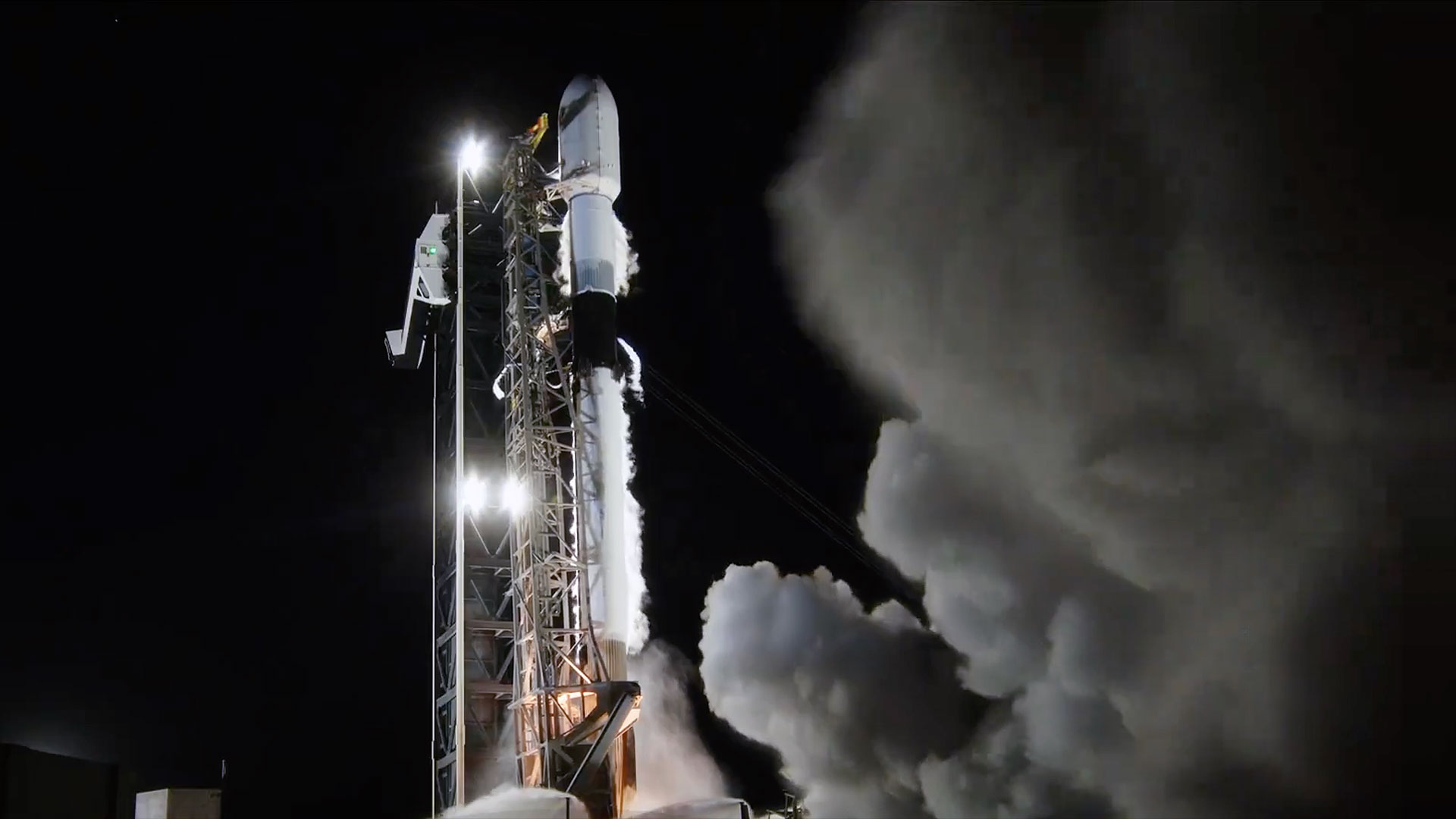Congress’s Biggest Financial Priority Is “Stablecoin.” What the Hell Is That?
Instead of tackling crashing markets, Congress is pushing a crypto sector that the Trump family is financially involved in. The post Congress’s Biggest Financial Priority Is “Stablecoin.” What the Hell Is That? appeared first on The Intercept.

The Trump administration’s trade war with the world has roiled the stock market and threatens to plunge the country into a recession while jacking up the price of basic supplies.
But instead of taking on the financial issues dominating the headlines, the House and Senate are racing to bring stablecoins — a cryptocurrency sector few Americans have even heard of — out from the shadows.
The $230 billion stablecoin industry could be the first to benefit from Donald Trump’s promise to make the U.S. the world’s “crypto capital of the planet.”
“Passing legislation gives them a first-mover advantage to profits that are to be gained.”
Industry advocates say the legislation will clear up uncertainty around the regulation of their cryptocurrencies, unleashing a new era of financial innovation. Critics of the bipartisan push warn that the legislation risks another financial crash while enriching Trump, whose family is launching a stablecoin of their own.
“Passing legislation gives them a first-mover advantage to profits that are to be gained. We saw that with the Trump meme coin, where a lot of people lost out but it didn’t matter because Trump’s platform was making fees,” said Mark Hays, of the group Americans for Financial Reform. “It just seems like a witches’ brew of problematic things that could lead to another crash.”
What Is a Stablecoin?
To their proponents, stablecoins offer all the benefits of crypto without the downsides.
They are pegged to real-world currencies, such as the U.S. dollar. The idea is that one dollar-denominated stablecoin can always be redeemed for one dollar. Stablecoin issuers use real-world assets, such as U.S. Treasury bonds, to back their offerings.
Stablecoins live on blockchains — cryptographically protected digital ledgers — just like more famous tokens like bitcoin or Ether. Unlike bitcoins, they are supposed to be insulated from wild price swings by their currency pegs. That hasn’t stopped some stablecoins from collapsing.
What’s the Point?
Boosters say that stablecoins can make payments faster, cheaper, and more efficient. They argue that stablecoins will make it easier to send money across international borders and create opportunities for the unbanked by cutting out traditional financial institutions.
So far, however, they’re mostly used to buy other cryptocurrencies. Crypto traders use them to cash in and cash out of more speculative tokens without paying repeated fees. Former Securities and Exchange Commission Chair Gary Gensler has likened them to “poker chips at the casino.”
Critics say that even though the biggest stablecoin was launched in 2014, the high-minded talk of improving the payment system has yet to produce results, and the only major users so far have been crypto traders, criminals seeking to evade money laundering laws, and people in the developing world whose own currencies face runaway inflation.
“They have been around for a decade. There is no doubt people have been trying to turn them into a general-purpose payment instrument,” said Arthur Wilmarth, a professor emeritus at the George Washington University law school. “And it really hasn’t worked out.”
Are They Really … Stable?
That’s what their promoters would have you believe. In reality, stablecoins have “depegged” from the dollar dozens of times.
As Sam Bankman-Fried’s fraudulent FTX exchange collapsed in late 2022, leading stablecoin issuer Tether saw its titular offering drop from the dollar by more than 2 cents. The second-biggest stablecoin, Circle’s USD Coin, dropped more than 13 cents amid revelations that many of its cash assets were jeopardized by the collapse of Silicon Valley Bank in 2023.
Then there was the notorious TerraUSD coin, an “algorithmic” stablecoin that was not backed by real-world assets. Its collapse took the token’s supposed value of $40 billion down to zero.
Despite the promise of more concrete assets backing today’s leading stablecoins, even crypto boosters have questions about Tether. The El Salvador-based stablecoin keeps only 82 percent of its reserves in cash or cash-like instruments, dividing up the rest in more volatile investments such as bitcoin. Moreover, it has never subjected its reserve to a full financial audit.
Tether is closely aligned with Commerce Secretary Howard Lutnick, whose former firm Cantor Fitzgerald holds much of the Tether’s U.S. Treasury bonds.
The very promise of stability can lead to runs on stablecoins, experts say.
“If people think that even a few pennies of their dollar are at risk, they are going to run,” Wilmarth said. “They are not thinking, ‘I’ve put this money in the S&P 500, and I’ll ride it up and down.’”
So Congress Is Doing What Exactly?
Trump has said he wants to sign a stablecoin bill by August. If it does, the legislation would be one of a handful of signature initiatives he approves this year — raising the question of why this niche topic is so important to Congress and the White House.
Even supporters of the idea of passing stablecoin legislation say the urgency seems to be motivated in large part by the industry’s torrent of campaign spending.
“That has had an effect,” said Tim Massad, the director of the Digital Assets Policy Project at the Harvard Kennedy School, who served as the chair of the Commodity Futures Trading Commission under Barack Obama. “There’s a valid substantive reason to prioritize it, in that stablecoins exist and we have been talking about it for a while, and I think there’s also some political reason why it’s being prioritized.”
Two bills pending in Congress, the STABLE Act in the House and the GENIUS Act in the Senate, would largely accomplish the same industry-friendly goals if passed.
Both bills would carve stablecoins out from securities law and the jurisdiction of the Securities and Exchange Commission. And both would allow some stablecoin issuers to opt for state-level regulation instead of federal, potentially letting them to shop for friendlier jurisdictions.
The bills would also create reserve requirements limiting what stablecoins can use as collateral, prohibiting them from investing in riskier assets such as bitcoins.
That is also where critics start to see problems: The Senate bill would allow stablecoins to use money market funds, which had to be bailed out by the federal government in 2008 and 2020, as collateral. Meanwhile, both bills would ban regulators from imposing tighter reserve requirements designed to protect against market crashes.
Neither bill goes far enough to outlaw foreign issuers of dollar-denominated stablecoins, potentially creating an incentive for issuers to move offshore and outside of U.S. regulation, according to Massad. And neither provides the Treasury Department with broad-enough authority to crack down on illicit finance, he said.
Moreover, both bills would allow non-banks to enter the stablecoin market, Wilmarth said, opening the door for Big Tech companies such as Meta or Amazon to get in on the action.
“Not only Big Tech but Big Finance,” he said. “They would have every piece of information about you if they could run all your basic financial transactions through their systems. I think that creates enormous concerns and problems.”
If Big Tech does enter the stablecoin market, critics warn, a run on their coins could lead to a larger financial contagion.
“You’re linking the commercial sector of our economy to our financial sector,” Wilmarth said. “Mark Twain supposedly said, ‘You can put all your eggs in one basket, but you better watch that basket.’”
Now Trump Has a Stablecoin?
Last month, members of the Trump family announced that they were getting in on the stablecoin game themselves through their World Liberty Financial venture. The firm is helmed by the sons of Trump’s Middle East envoy Steve Witkoff.
Like other stablecoins, it promises to be backed by assets such as U.S. Treasury bonds, with regular audits of its reserves.
Massad said he could think of no similar move by other presidents.
“Jimmy Carter put his peanut farm in a trust, but peanut farm regulation wasn’t exactly a big issue back then,” Massad said. “I think it’s totally inappropriate for the president or members of his family to be launching a stablecoin or otherwise engaging in crypto businesses.”
Is This Thing Going to Pass?
The announcement of the Trump stablecoin didn’t just add another potential conflict of interest to the mountain of existing ones. It also alarmed crypto industry figures, who had been counting on stablecoin legislation as a surefire win this Congress after spending hundreds of millions of dollars on politicians in both major parties during last year’s election cycle.
Both bills seemed destined to attract widespread, bipartisan support until the Trumps entered the picture.
Instead, at a House Financial Services Committee meeting earlier this month, Rep. Maxine Waters, D-Calif., the ranking member of the committee, denounced the Trumps and said she could not be involved in passing a bill that would further enrich them.
The House bill still passed out of committee with support from six Democrats, giving it a bipartisan sheen. The Senate’s stablecoin bill is co-sponsored by Republican Sens. Bill Hagerty, Cynthia Lummis, and Tim Scott, along with Democratic Sens. Angela Alsobrooks and Kirsten Gillibrand.
The post Congress’s Biggest Financial Priority Is “Stablecoin.” What the Hell Is That? appeared first on The Intercept.







































































